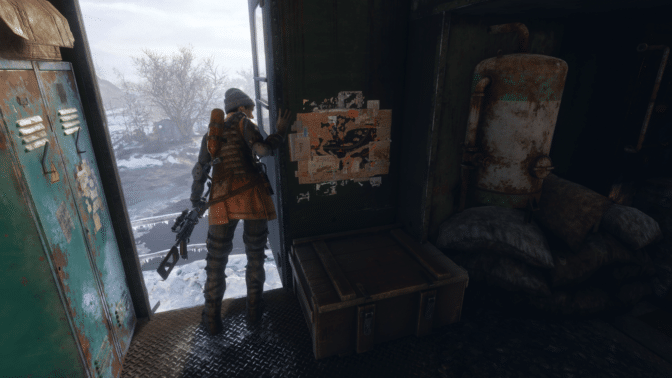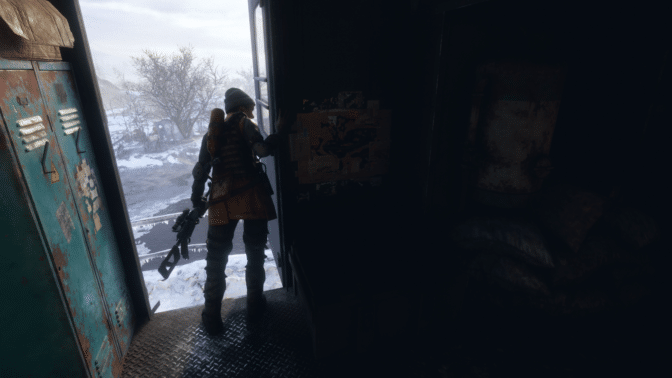The Star Wars-themed “Reflections” demo is so visually stunning, it’s natural to assume it’s a film clip.
I felt that way the first time I saw this real-time ray-tracing showcase, at GDC 2018, and so have the hundreds of people I’ve shown it to since. Hitting a hotkey to reveal the wire-frame leaves you floored.
Last October, I was again delivering a knock-your-socks-off ray-tracing demo at PAX Australia. It was then that I realized Metro Exodus could be a showcase title for real-time ray tracing in games.
Gaming as an Art Form
The Metro series is more artistic than a typical game. The game’s creators work hard to capture the feeling of the Metro novels that inspire them. As a survival horror game, the Metro series is commonly described as:
- Story driven – the creators take painstaking care of their story lines
- Moody – the series is gloomy, dark and spooky
- Visually stunning – the game’s gorgeousness makes it a “graphics beast,” very demanding of the tech powering it
As artists who value technology, the people behind Metro have a rare combination of artist and nerd that puts them among a select group of gutsy game developers who use the latest technology to make their game stand out visually.
To achieve the stunning results of Metro Exodus, Deep Silver, 4A Games and NVIDIA have harnessed the first-ever implementation of real-time, ray-traced global illumination.
To explain global illumination, I’ll turn to Unity:
Global Illumination is a system that models how light is bounced off of surfaces onto other surfaces (indirect light) rather than being limited to just the light that hits a surface directly from a light source (direct light). Modelling indirect lighting allows for effects that make the virtual world seem more realistic and connected, since objects affect each other’s appearance.
The effect realistic global illumination has on a gaming experience is both subtle and profound. Let me explain.
Gaming Artists Get a New Artistic Tool
Put simply, ray-traced global illumination delivers more realistic lighting. But its impact on the immersiveness gameplay is hard to overestimate.
Game developers can use this new creative tool to set the mood in the same way movie makers and photographers have for years.
Using dim lighting, shadows and over-bright techniques, artists deliver the message of “mysterious,” or “spooky” or “warmth” at a single glance.
Missing the Mystery
With ray tracing, theses techniques can now be used to greater effect in games.
The Metro Exodus segment I demoed at PAX Australia starts with ray tracing off. You awake and follow a path to a shack on the shore. As you walk up, you see a skeleton before you enter — and every single thing inside the shack, for that matter. Because everything is gray, you know it’s supposed to be dark inside. The game is a shining example of what we’re used to seeing — not bad but just not “correct.”
As a result, the spookiness is lost. Because you can see everything, there’s no mystery.
With ray tracing on, you can barely make out the skeleton as you approach the shack. Its interior is nearly pitch black. It’s more an unsettling hint than stark reality. Once inside, you’re jolted by the skeleton hanging on the wall.


Ray Tracing Is a Game Changer
Because the lighting model is more accurate, ray-traced global illumination changes the way you play Metro Exodus.
With ray tracing on, you have to pull out your flashlight to see in the dark shack. The game’s realistic lighting model means that you can only see what is illuminated by this light source — everything else is pitch black. So you focus your attention on the lit area, the light circle the flashlight creates.
With ray tracing off, you really don’t need your flashlight. If you do use it, you find your focus not on the brightened area, but on the unlit areas because you know that’s where the danger will likely come from.


Don’t Fight the Feeling
Metro Exodus with ray-traced global illumination is not your typical “eye candy” demo where shot “A” looks better than shot “B.” The biggest contribution the technology makes to the game is in some ways psychological. The realistic lighting sets a mood that connects with elements ingrained in the human psyche. Its subtle visual lighting cues trigger feelings and emotional reactions I haven’t felt in video games before.
As you enter that first shack, ray tracing puts you on edge. It’s a level of spooky usually reserved for movies.
With ray tracing off, my internal voice goes something like: “I’m supposed to be scared … it’s supposed to be dark and gloomy.” With ray tracing on, it is dark. It is gloomy. And I am scared.
Ray Tracing’s Effects: It’s No Fish Story
We’ve all been trained our whole lives — by the sun — to tell what time it is. Even without a watch, we have a feel for dawn, noon, 4pm and dusk as they all have different lighting characteristics we cue on without thinking about it.
The same can be said for the Metro Exodus demo with ray tracing on because it has a day-night cycle as part of its play. With ray tracing on, I get the same feeling that I get when I’m fishing in my tiny, battery-powered jon boat on a big lake. When the sun is setting, my internal voice feeds an anxiety: “Pack it up, it’s getting dark. This boat is too small to be out on this lake at night. You have no lights. Danger close!”
With ray tracing on in a game, it’s the same concept: “Hurry and complete the mission. The sun is going down. Mutants in the woods. Danger close! Hurry!” With ray tracing off, you lose the subtle lighting cues and the resulting tensions they create. The anxiety of potentially running around a forest full of mutants at night is lost.
That is immersion.
Ray-Traced Graphics Are a Whole New Ballgame
Ray tracing has long been the preferred way to render computer graphics, but before NVIDIA RTX the performance tax incurred made it prohibitive to use in games.
That’s not the case for movies, which for the last decade have used ray tracing to create stunningly realistic special effects. Movie makers have the luxury of rendering those scenes offline and using warehouses full of computers to do so.
Today, games use the programmable shader technology NVIDIA pioneered 15 years ago, but this technology has run its course. To make games look better, we need a new way to do computer graphics in real time.
Ray tracing is the way forward for the gaming industry. I hope that other gamers get the same kinds of visceral reactions to the lighting that I had, and that playing Metro Exodus will illustrate the impact ray tracing is having on games for them.